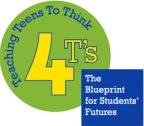When you first leave high school, you’ll probably have very little, if any, experience in the world of professional dance. Whether you’re self-taught and trained or have attended dance lessons to foster you skills, you still probably haven’t had any experience working in the field of dance. If you’re looking to put your skills to use as a dance instructor, you’ll need to “pay your dues” before you’ll be hired for a paying position.
There are countless opportunities for volunteer instructors that might be open to dancers without instruction experience, and these range in types and levels of dance. The higher the level being taught, the more experience you will probably need. Teaching dance to children, for example, is probably the easiest way for you to break into the dance instructor business, as teaching children requires knowing only the basic skills that you will be teaching and the ability to demonstrate these basic skills effectively. However, “effectively” might mean different things to different employers.
Often times, being able to teach children “effectively” means that you’ve had experience with children in some capacity and know how to communicate on their wavelength. So if you’re thinking that teaching children might be a good way for you to get into teaching dance, do yourself a favor and start getting some experience working with children on any level now. You can do this in any number of ways, but the most common might be to become a camp counselor at a day camp, teach an arts and crafts program, become an assistant coach for a sport or dance team, tutor or oversee a youth study group, help out with an after-school program, or any other volunteer opportunity that involves working with children. I’ve listed some options below that you might consider trying out to get ahead on building that “experience” section on your résumé.
1. Sign up to be a volunteer with Educational Alliance
This organization is always looking for volunteers to work events that it hosts all year round. If you’re looking for volunteer opportunities that are easy to plan for in advance and that you can decide to join in on at the last minute, this could be a great starting point. There is a list of upcoming events, and dates and times are displayed to make it easy for you to see what you’ll be available to help with. You can also sign up to be a volunteer, and you will be emailed with opportunities. Most of the events require working with children, so this could help you on your road to experience.
2. Find listings for volunteer positions at VolunteerMatch
You can search for positions that relate to whatever type of volunteer work you’d like to be doing and in what location. You can search for “dance” to find dance positions, or “children” to find huge lists of positions related to your search terms. Again, some of the dance positions may require you to have previous experience, so you might want to consider looking for volunteer opportunities relating to children if you’re not having any luck with the dance listings.
3. Volunteer through NYC Service
Much like VolunteerMatch, this website allows you to search for volunteer positions using keywords, but you can also add your skills, interests, and the age range of people you’re volunteering to help. If you’re looking for dance opportunities, your best bet is to type “dance” into the keyword box.
4. Volunteer to work events and programs at All for Good
Search for positions in any location using keywords. Events with specific dates and times will appear, and you can sign up to help for any of them that are a good fit for you. There are also ongoing programs related to dance that are constantly in need of volunteers. The site allows organizations to post volunteer advertisements, so the list of opportunities is updated and replenished frequently.
5. Work with children through Change for Kids
This organization works explicitly with children, so if you’re trying to gain experience with children first before breaking into dance, this could be a great medium for you to find opportunities. You’ll find a list of events with dates, times, and the role that you can expect to play at the events.
6. Find local volunteer opportunities at idealist.org
The website operates much like the other sites listed, as it allows you to search using keywords and specific locations. You’ll need to narrow down your location by selecting “local results only” in the “location” box on the left-hand side of the page.
7. Sign up to volunteer with New York Cares
To volunteer with this organization, you will be required to sign up for an online account and attend an orientation event before you can begin volunteering. However, in the meantime, the website lists several opportunities that are not connected with New York Cares that involve working with young students in Harlem, including helping with after-school activities, tutoring or helping students with homework after school and in class, and helping younger students transition into high school.
-Hope Swedeen
What are some other ways that you can gain experience in teaching dance?

 RSS Feed
RSS Feed